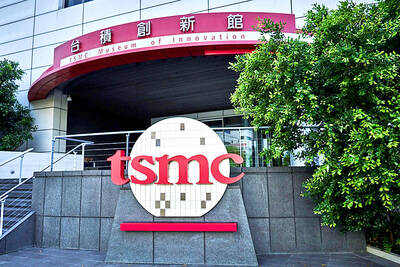Countrywide Financial, the US' largest mortgage lender and loan servicer, reported a US$1.2 billion loss in the third quarter of this year on Friday, but said it expected to return to profitability by the end of the year as the housing crisis subsided and it capitalized on disruptions in the home loan market.
Although the loss was Countrywide's first in 25 years, its upbeat outlook pushed the company's shares up 32 percent on Friday, to US$17.30. Nevertheless, the stock is down 60 percent this year.
"Countrywide and our very capable management team have taken the steps we believe that are necessary to position Countrywide to continue our long-term track record of success," the company's founder and chief executive Angelo Mozilo said in a conference call with analysts.
Citing the upheaval in the nation's mortgage and residential real estate market, Countrywide officials said it incurred a pretax loss of US$1.97 billion in the third quarter, in contrast to a US$665 million profit in the second quarter of this year. Loan financings fell to US$96 billion in the quarter, down from US$118 billion during the same period of last year. The company said 90 percent of its loans were made through Countrywide Bank.
Delinquencies among the company's loans continued to rise significantly. For instance, in its portfolio of pay option adjustable-rate loans, which allow the borrower to pay no principal and only a small percentage of the interest owed, 3 percent were more than 90 days late in the quarter. During the same period last year, 0.3 percent were that far behind.
Reflecting the declining value of mortgages made previously, the company adjusted the values of loans on its books, recording charges of almost US$900 million against those in its inventory or still in its pipeline at the end of the quarter. The provision for credit losses on the loans it holds for investment totaled US$934 million; most of it, US$790 million, was recorded at Countrywide Bank.
Countrywide wrote down US$690 million more on the value of residual interests it holds in home equity lines and subprime loans it has made.
Kenneth Bruce, an analyst at Merrill Lynch who had a sell rating on Countrywide shares, upgraded the stock to neutral on Friday because the loss was not as bad as had been expected. Last August, Bruce warned investors that Countrywide could face solvency hurdles as the market for commercial paper, its main source of financing for mortgages, seized up.
Countrywide said on Friday that it had enough capital, liquidity and financing for its operations and growth plans. In addition to the US$11.5 billion in bank lines secured last month, Countrywide said it had arranged a one-year, US$10.4 billion commercial paper facility and US$6.25 billion in repurchase agreements.
At the beginning of the conference call, Mozilo praised Henry Cisneros, a Countrywide director whose resignation was disclosed on Wednesday.
Cisneros, a former US housing and urban development secretary, said that he had left the board to focus on CityView, a home builder financing company he runs. Mozilo said the nominating committee of Countrywide's board was searching for an independent director to replace Cisneros.

SEEKING CLARITY: Washington should not adopt measures that create uncertainties for ‘existing semiconductor investments,’ TSMC said referring to its US$165 billion in the US Taiwan Semiconductor Manufacturing Co (TSMC, 台積電) told the US that any future tariffs on Taiwanese semiconductors could reduce demand for chips and derail its pledge to increase its investment in Arizona. “New import restrictions could jeopardize current US leadership in the competitive technology industry and create uncertainties for many committed semiconductor capital projects in the US, including TSMC Arizona’s significant investment plan in Phoenix,” the chipmaker wrote in a letter to the US Department of Commerce. TSMC issued the warning in response to a solicitation for comments by the department on a possible tariff on semiconductor imports by US President Donald Trump’s

The government has launched a three-pronged strategy to attract local and international talent, aiming to position Taiwan as a new global hub following Nvidia Corp’s announcement that it has chosen Taipei as the site of its Taiwan headquarters. Nvidia cofounder and CEO Jensen Huang (黃仁勳) on Monday last week announced during his keynote speech at the Computex trade show in Taipei that the Nvidia Constellation, the company’s planned Taiwan headquarters, would be located in the Beitou-Shilin Technology Park (北投士林科技園區) in Taipei. Huang’s decision to establish a base in Taiwan is “primarily due to Taiwan’s talent pool and its strength in the semiconductor

An earnings report from semiconductor giant and artificial intelligence (AI) bellwether Nvidia Corp takes center stage for Wall Street this week, as stocks hit a speed bump of worries over US federal deficits driving up Treasury yields. US equities pulled back last week after a torrid rally, as investors turned their attention to tax and spending legislation poised to swell the US government’s US$36 trillion in debt. Long-dated US Treasury yields rose amid the fiscal worries, with the 30-year yield topping 5 percent and hitting its highest level since late 2023. Stocks were dealt another blow on Friday when US President Donald

UNCERTAINTY: Investors remain worried that trade negotiations with Washington could go poorly, given Trump’s inconsistency on tariffs in his second term, experts said The consumer confidence index this month fell for a ninth consecutive month to its lowest level in 13 months, as global trade uncertainties and tariff risks cloud Taiwan’s economic outlook, a survey released yesterday by National Central University found. The biggest decline came from the timing for stock investments, which plunged 11.82 points to 26.82, underscoring bleak investor confidence, it said. “Although the TAIEX reclaimed the 21,000-point mark after the US and China agreed to bury the hatchet for 90 days, investors remain worried that the situation would turn sour later,” said Dachrahn Wu (吳大任), director of the university’s Research Center for